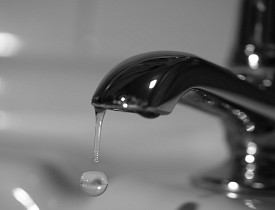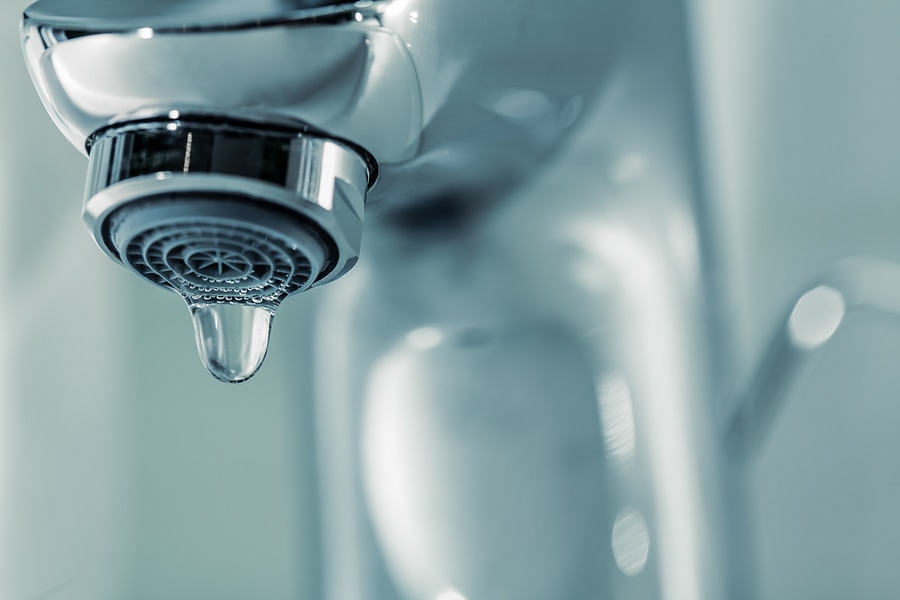Our Motives Behind Repairing a Faulty Faucet
Our Motives Behind Repairing a Faulty Faucet
Blog Article
Just about every person is bound to have their personal views involving Should I Repair or Replace a Leaky Faucet?.

Dripping taps could seem like a minor hassle, but their impact surpasses simply the nuisance of the noise. From wasting water to sustaining unnecessary monetary costs and health and wellness risks, ignoring a trickling faucet can cause numerous repercussions. In this short article, we'll look into why it's critical to address this usual household concern quickly and properly.
Wastage of Water
Environmental Effect
Leaking taps add significantly to water wastefulness. According to the Epa (EPA), a single tap dripping at one drip per secondly can waste more than 3,000 gallons of water each year. This not only strains water resources but likewise impacts communities and wild animals depending on them.
Step-by-Step Overview to Dealing With a Dripping Tap
Tools Needed
Before attempting to fix a dripping tap, collect the needed tools, consisting of a flexible wrench, screwdrivers, replacement components (such as washing machines or cartridges), and plumber's tape.
Typical Faucet Issues and Their Solutions
Identify the sort of tap and the details problem triggering the drip. Typical issues include damaged washers, rusty valve seats, or faulty O-rings. Refer to supplier directions or online tutorials for step-by-step guidance on fixings.
Financial Prices
Raised Water Expenses
Beyond the ecological effect, trickling taps can inflate water bills considerably. The built up wastage with time equates right into greater energy costs, which could have been stayed clear of with timely fixings.
Prospective Property Damages
In addition, extended dripping can bring about damage to components and surfaces surrounding the tap. Water buildup can trigger discoloration, rust, and also structural concerns if left unattended, resulting in extra fixing expenses.
Health and wellness Problems
Mold and Mold Development
The constant presence of wetness from a trickling tap produces an excellent atmosphere for mold and mold development. These fungis not just jeopardize interior air top quality yet also present health and wellness threats, particularly for people with respiratory conditions or allergies.
Waterborne Conditions
Stagnant water in dripping faucets can end up being a breeding ground for bacteria and other pathogens, enhancing the danger of waterborne conditions. Contaminants such as Legionella bacteria grow in stationary water, possibly bring about serious health problems when consumed or inhaled.
DIY vs. Professional Repair
Advantages and disadvantages of DIY Repair
While some may attempt to fix a trickling tap themselves, DIY fixings feature their own set of obstacles. Without proper expertise and devices, DIY efforts can exacerbate the problem or result in insufficient repair work, extending the problem.
Advantages of Hiring a Specialist Plumber
Hiring a specialist plumber guarantees that the underlying root cause of the trickling faucet is resolved effectively. Plumbings possess the knowledge and equipment to diagnose and repair tap concerns efficiently, conserving time and decreasing the threat of additional damages.
Ecological Obligation
Individual Payment to Conservation
Taking duty for fixing dripping taps straightens with wider efforts towards water conservation and environmental sustainability. Every individual's activities jointly make a considerable effect on maintaining precious sources.
Sustainable Living Practices
By prioritizing timely fixings and embracing water-saving routines, people contribute to sustainable living methods that profit both existing and future generations.
Preventive Measures
Routine Upkeep Tips
To prevent trickling taps, execute routine maintenance such as cleaning aerators, examining for leaks, and changing worn-out components without delay. Additionally, consider setting up water-saving devices or updating to more effective fixtures.
Significance of Prompt Repair Works
Attending to trickling faucets as quickly as they're noticed stops more water wastage and prospective damages, inevitably conserving both water and money in the future.
Impact on Property Worth
Understanding of Well-Maintained Residential Or Commercial Property
Keeping a property in good condition, including addressing maintenance problems like leaking faucets, improves its perceived worth and value among prospective customers or lessees.
Impact on Resale Value
Features with well-kept plumbing components, including faucets, command higher resale values in the real estate market. Resolving trickling taps can add to a positive impression during property evaluations and settlements.
Final thought
Dealing with a leaking faucet goes beyond simple benefit; it's a necessary step toward saving water, lowering monetary prices, and guarding wellness and property. Whether with DIY repair work or professional assistance, acting to deal with leaking faucets is a small yet impactful method to advertise responsible stewardship of sources and contribute to a healthier, extra lasting future.
How to Fix a Dripping or Leaky Faucet
A leaking faucet is one of the most common problems that homeowners encounter, but it being commonplace doesn’t make it any less annoying. The constant drip drip drip of a leaking bathtub faucet, showerhead, or sink tap can disturb your home’s serenity. Left neglected, a dripping faucet can also result in higher water bills and discoloration or mold growth in your sink or plumbing fixtures.
Fortunately, you don’t have to be a trained plumber to know how to stop a dripping faucet. With some basic tools, replacement parts, and a little patience, leaky faucet repair is a breeze. In this article, we’ll explain what causes dripping faucets and how you can fix them.
What Causes a Leaking Faucet?
Kitchen and bathroom faucets come in all manner of designs, but most involve some combination of valves, O-rings, seals, and washers. The O-ring is usually the weakest link, but any one of these pieces can wear down over time. Heat, moisture, temperature fluctuations, minerals, mold, and movement can contribute to warping and corrosion, breaking the watertight seal. This just comes with the territory of being a homeowner. Everything is always subject to wear and tear, and some component parts of your appliances and fixtures need to be replaced on occasion. At least replacement O-rings are cheap!
More rarely, dripping faucets can be a symptom of excessively high water pressure. Were this the case in your home, you would probably notice that the leak is not isolated to one faucet. Water pressure issues are harder to resolve on your own. We recommend contacting a professional plumber if you suspect your water pressure is too high.
How to Fix a Dripping Faucet
Pipe wrench or monkey wrench Allen wrench set Screwdrivers Old towel or rag Shut off the water.
Before you do anything, you need to turn off the water to keep from drenching your kitchen or bathroom. You should find a valve under the sink and against the wall. Once you’ve turned this valve, try turning the faucet on to confirm that the water source has been cut off.
If you can’t locate your local valve for the faucet you’re working on, you can always shut off the water to the house at the main valve. Of course, this will prohibit anyone from using the sinks, showers, or toilets while you’re working on the faucet that’s giving you trouble.
Plug or block the drain.
You’ll be disassembling the faucet and removing some small bits of hardware. Plug the drain with a stopper or rag to avoid the possibility of a small screw falling into your P-trap.
Take apart the faucet assembly.
There are several varieties of kitchen and bathroom faucets, each with its own manner of assembly. For detailed instructions on how to disassemble your faucet, you can refer to the fixture’s manual or contact the manufacturer. If you know whether you have a ball, disc, cartridge, or compression faucet, you can find detailed schematics online.
In general, you need to begin by removing the faucet handles. You might notice a small screw that you’ll need to remove with a screwdriver or Allen wrench. If you don’t see any visible securing hardware, it’s likely hidden under a decorative cap that can be unscrewed or popped off with flathead screwdriver.
Remove each piece methodically, consulting a schematic when necessary. Take notes or arrange the pieces in such a way to make it easier to correctly reassemble the faucet later.
Remove the cartridge.
Once you’ve removed the handles and securing hardware, you should be able to remove the valve cartridge or stem. Some cartridges will slide right out. Other faucet models will require you to loosen a nut with a pipe wrench before you can remove the valve stem.
Examine the exposed hardware.
With the cartridge or stem removed, inspect the component parts. Check the rubber O-rings for wear and tear. Also examine the seat washer for corrosion or other damage. These pieces are usually the responsible parties for a dripping faucet, but it’s worth inspecting the other component parts while you have the faucet disassembled.
Find replacement parts.
Once you’ve identified which faucet component has failed, find an identical replacement. Your local hardware store should have O-rings, seat washers, and other standard components in stock. If you have a luxury or uncommon faucet, you may have to contact the manufacturer for a replacement part.
It’s a good idea to take your old parts with you to the hardware store so you can compare them with the store’s inventory and be sure you’re purchasing the correct replacement.
Reassemble the faucet.
With your new parts in hand, reconstruct the faucet and handles. Don’t be tempted to overtighten screws or nuts. You might think this could create a better seal, but it can instead damage or bend a delicate part of the assembly and create a new problem for you.
Turn on the water and test the faucet.
The only thing left to do is test your work. Unplug the sink, turn the water back on, and try the faucet. Congratulate yourself on a job well done!
https://www.libertyhomeguard.com/how-to-fix-a-dripping-or-leaky-faucet/

As a keen person who reads on Should I Repair or Replace a Leaky Faucet?, I assumed sharing that excerpt was really helpful. Appreciated our blog posting? Please quickly share it. Let somebody else locate it. We take joy in your readership.
Report this page